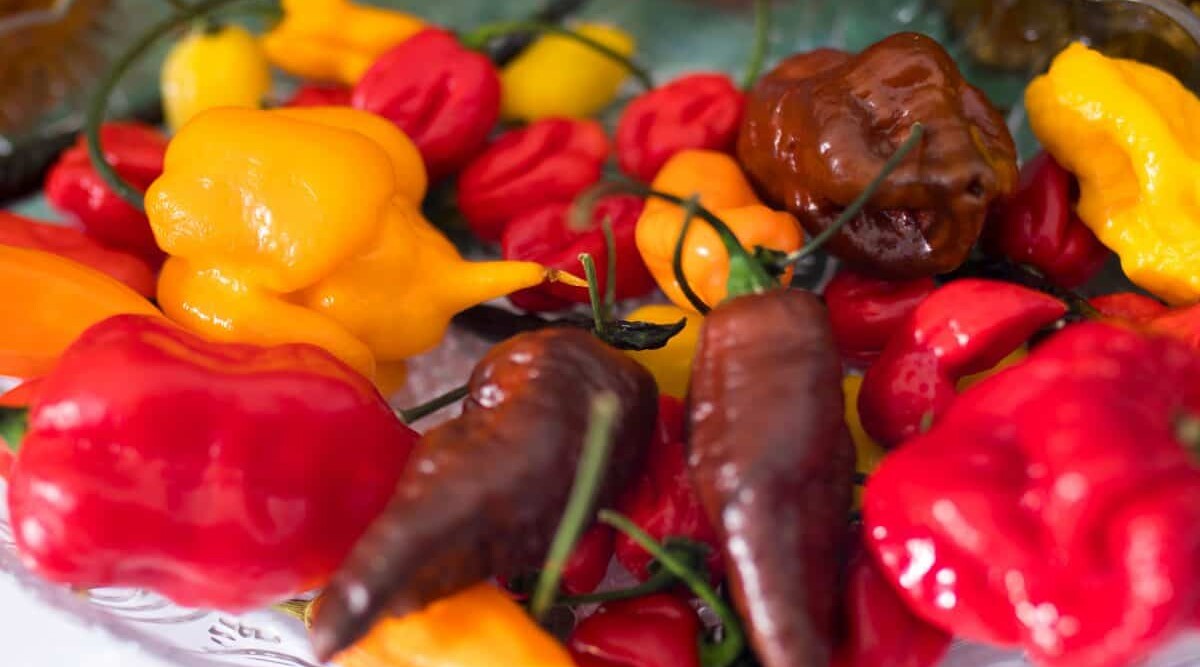
This article looks at chili peppers, learning about the many popular varieties, which are the hottest and why, and how to cook with them.
Humankind’s obsession with spice is probably nearly as old as cooking. Hot chili peppers are a natural way to add flavor and excitement to just about any meal. There’s a heat level for everyone from mild to inferno and a range of tastes to explore.
But, rather than just dive in unprepared and risk ruining your meal or even your day, let’s get to know the chili pepper family a little better.
In this extensive guide, you’ll learn what chili peppers are and where they come from, and why they pack heat inside their colorful exteriors, and how it’s measured.
Plus, we’ll get to know a selection of the world’s favorite peppers, how to use them, and which ones you should always stock. We’ve also got a list of the hottest peppers in the world and, as a public service, tips for cooling your mouth in an emergency!
Ready to feel the burn?
Jump to:
- 1 What are Chili Peppers?
- 2 What Causes the Heat and Burning?
- 3 How Many Different Types of Chili Peppers Exist?
- 4 What is the Scoville Scale?
- 5 The World’s Most Popular Peppers — from Mild to Hot
- 5.1 Bell Peppers
- 5.2 Banana Pepper
- 5.3 Paprika Peppers
- 5.4 Pimento (Pimiento) Peppers / Cherry Pepper
- 5.5 Poblano Peppers & Ancho Chilies
- 5.6 Padron Peppers
- 5.7 Jalapeño & Chipotle
- 5.8 Serrano
- 5.9 Cayenne Peppers
- 5.10 Tabasco Pepper
- 5.11 Bird’s Eye Chilies
- 5.12 Piri Piri or Peri Peri
- 5.13 Scotch Bonnet
- 5.14 Habanero
- 5.15 Chocolate Habanero
- 5.16 Trinidad Scorpion
- 5.17 Ghost Pepper/Bhut Jolokia
- 5.18 Carolina Reaper
- 6 The Hottest Chilies in the World
- 7 Essential Chili Peppers Every Cook Should Stock
- 8 Chili Pepper Substitutions
- 9 Ways to Cool Your Mouth That Work (Read this BEFORE You Take a Bite!)
- 10 Final Thoughts
What are Chili Peppers?
We all know peppers when we see them. But what the heck are they? If you thought they were vegetables, you’re not alone — but you’re also wrong. Chili peppers are fruit, though most of them lack the sweetness we usually associate with fruits.
Chilies are harvested from the genus of Capsicum plants, which is part of the nightshade family. That makes them cousins of a diverse range of edibles, including tomatoes, eggplants, and goji berries.
Chili peppers are grown in warm countries around the world but originated in South America. It’s said that Christopher Columbus brought chilies back to Europe, calling them “peppers” in a mistaken belief they were related to black pepper. (They aren’t.)
Later in the article, you’ll find a list of some of the world’s most popular peppers. I’ve included the place of origin for each cultivar on the list; keep in mind that while peppers are only native to the Western Hemisphere, hybrids and cultivars are developed worldwide.
What Causes the Heat and Burning?
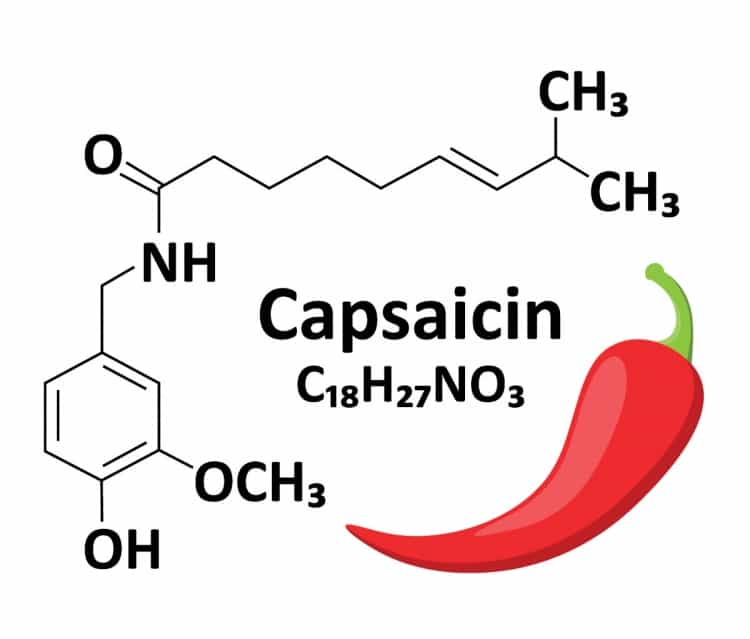
Of course, what keeps so many of us coming back for more peppers, is the same thing that keeps others away — the heat. Where does this unique property come from?
Inside every hot pepper is capsaicin, a chemical compound that, ironically, is supposed to be a deterrent to mammals looking for a snack. Why just mammals? Because mammalian teeth crush the seeds, preventing them from germinating. Birds, however, can eat chilies pain-free. Eventually, they poop out the seeds intact, and new plants grow.
Capsaicin is the hottest type of capsaicinoid, a group of five compounds found in nature. These compounds activate a protein in your body that detects heat to alert the brain there’s a problem. Weirdly, while the brain thinks you’re being burned, the body releases hormones, and for many, that sudden rush feels so good, they want to do it all over again.
How Many Different Types of Chili Peppers Exist?
While you could probably rattle off at least half a dozen hot peppers by name, there are just five agricultural species of chili pepper. From those five, however, comes a huge list of cultivars and hybrids. Even when peppers are picked and how they’re prepared can lead to a name change. For example, a green bell pepper is just a red bell pepper picked before it’s fully ripened.
It’s difficult to say precisely how many types of Chili peppers there are. I’ve seen estimates ranging from 2000 to 4000.
New varieties are constantly in development, usually in a quest to create the hottest chili possible. We tend to see lists of the most popular 15 – 20 chili peppers, though I’ve found a few that exceed 100 entries. There are some 40,000 varieties of peppers if you expand your search beyond chilies.
What is the Scoville Scale?

Chili pepper heat is measured using the Scoville Scale. Wilbur Scoville was a scientist who devised a test back in 1912 to measure the heat and pungency of chili peppers.
Scoville fed people solutions of ground chilies and sugar water to gauge their reaction. If they said it was hot, he diluted the solution with more sugar water and gave it to them again. The process repeated until the heat was gone, and the pepper got a number based on the number of dilutions. I seriously hope those people were well compensated for their time.
Modern Scoville testing is more scientific, utilizing a process called High-Performance Liquid Chromatography. I certainly don’t pretend to understand it, but it allows scientists to measure the compounds in different foods and other substances.
What’s most important to regular Joes and Janes like us, is to know that the higher the number, the hotter the pepper. Knowing this, you can kind of work out how intense the heat of a pepper is based on your experience with other peppers.
For example, the jalapeño is probably the best-known and most commonly consumed hot pepper, at least in North America. The range for jalapeño s is 2,500–8,000 SHU (Scoville Heat Units).
Does that sound hot?
Now let’s look at Scotch Bonnets, another popular pepper and one found in most grocery stores. They score between 100,000–350,000 SHU. That means even the mildest Scotch Bonnet is over 12 times hotter than the hottest jalapeño .
Incidentally, pure capsaicin measures between 15–16,000,000 SHU. Handle with extreme care. Further down, we’ll talk about the 5 hottest chili peppers in the world.
The World’s Most Popular Peppers — from Mild to Hot
We’ve whittled down the list of the world’s peppers to 18 of the most popular. They’re arranged from mildest to hottest, and we’ve included a few notes about each one, including where they come from and how to use them.
In many cases, it’s hard to know the precise origins of a particular pepper. In those instances, I’ve gone with the country with which they’re most closely associated.
Note that SHU can vary between plants of the same variety. To keep things simple, we’ve arranged them by the maximum score for each pepper.
Bell Peppers
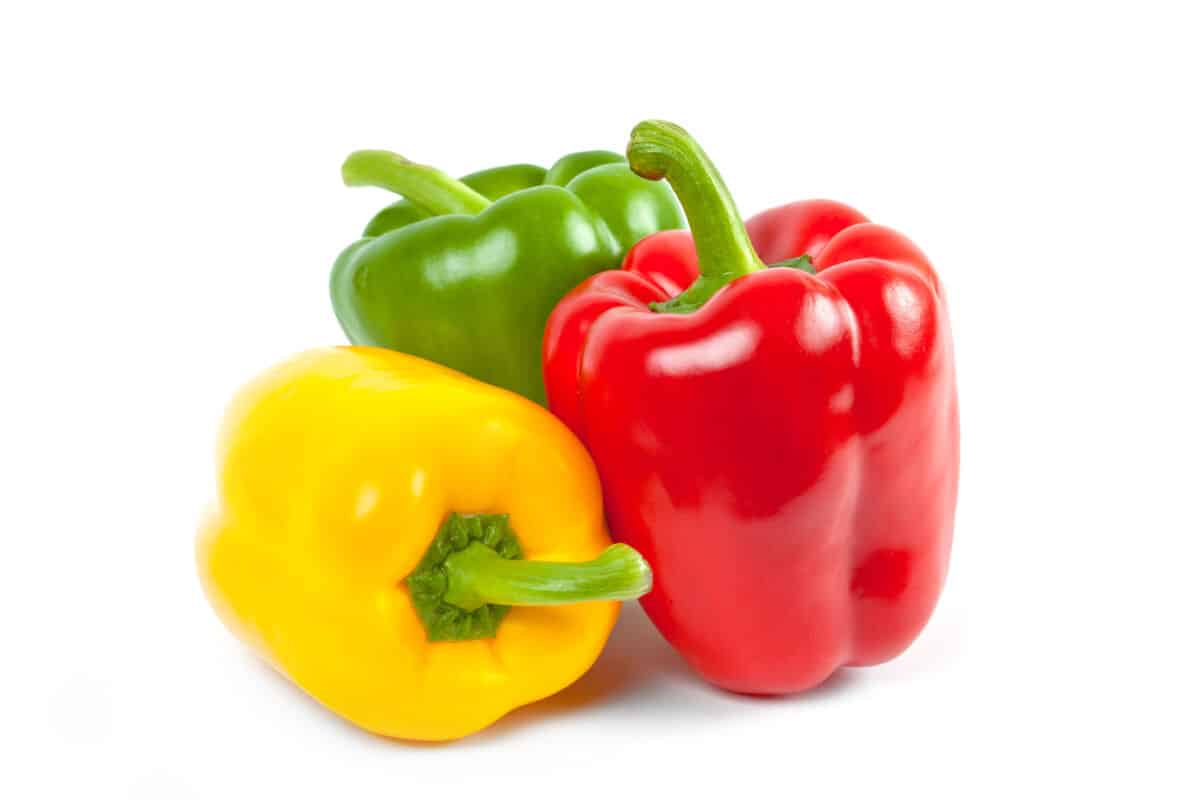
Scoville Heat Units: 0
Origins: Hungary
Flavor and Uses: The only pepper on this list that doesn’t contain capsaicin, bell peppers are mild or even sweet. They come in a rainbow of colors and are popularly eaten raw on their own or added to salads for sweetness and texture. They’re also excellent for sautéing and are a primary ingredient in fajitas.
Banana Pepper
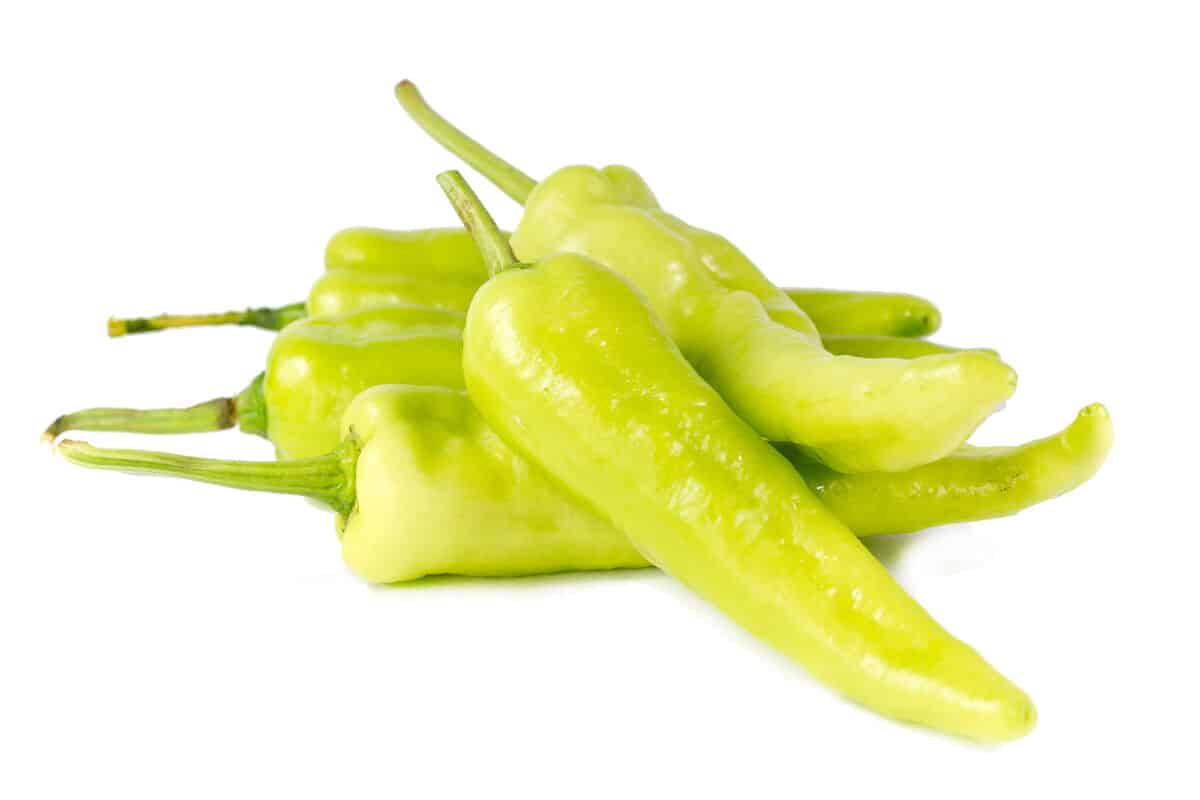
Scoville Heat Units: 1-500
Origins: Americas
Flavor and Uses: Named for their shape and color (they taste nothing like bananas), these, typically, very mild peppers add sweetness and crunch to recipes when used raw. You might find a few that add low-level spice, but pepper fans will be hard-pressed to notice even the slightest bit of heat. Banana Peppers are very popular for pickling for use as a garnish or stuffing and grilling.
Paprika Peppers
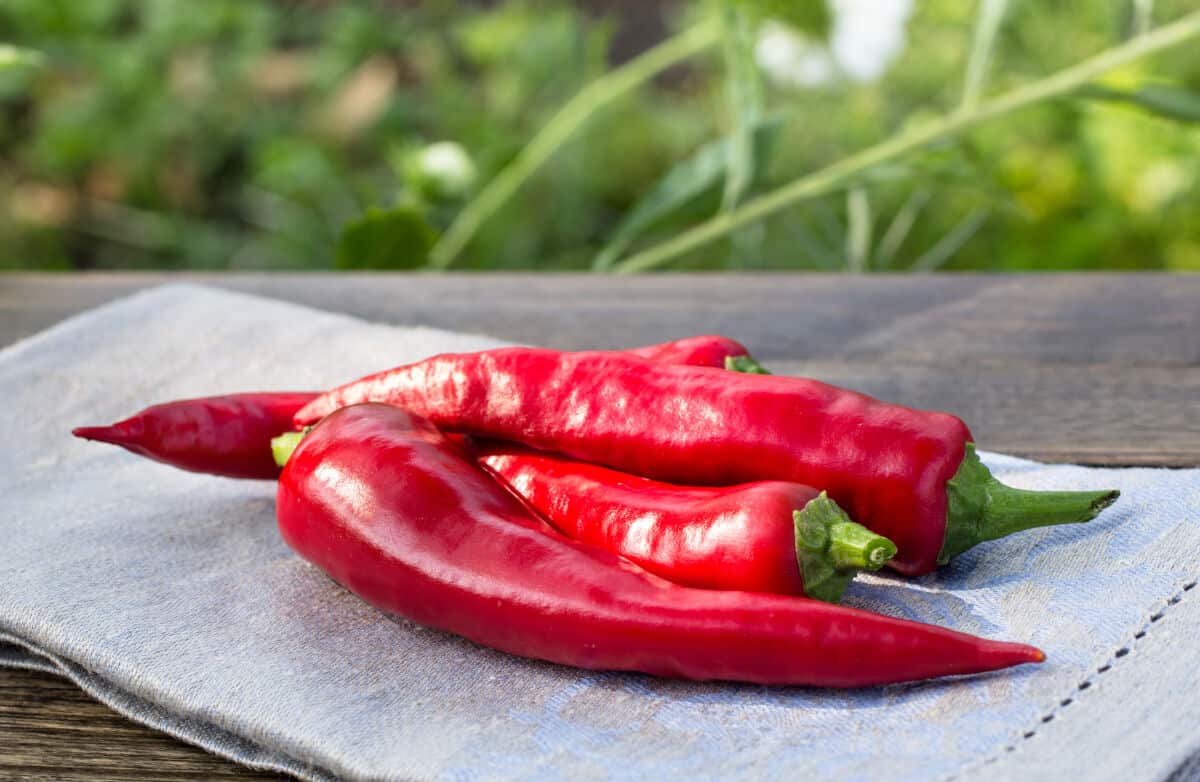
Scoville Heat Units: 250-1,000
Origins: Americas/Hungary
Flavor and Uses: Though the peppers were introduced from the Americas in the 17th century, the namesake spice comes mainly from Hungary, where there are eight principal varieties. The peppers themselves are generally quite mild, crispy, and tasty, though they are rarely eaten raw.
Paprikas can be roasted, too, but they are almost always dried, ground, and used for paprika spice. Some paprika spices blend other, hotter peppers with paprika for a zestier taste. Others use smoked peppers for a rich, smoky flavor.
Paprika spice lends mild, peppery flavor and even sweetness to rubs and sauces and adds a very pleasing color when sprinkled on top of just about anything.
Pimento (Pimiento) Peppers / Cherry Pepper
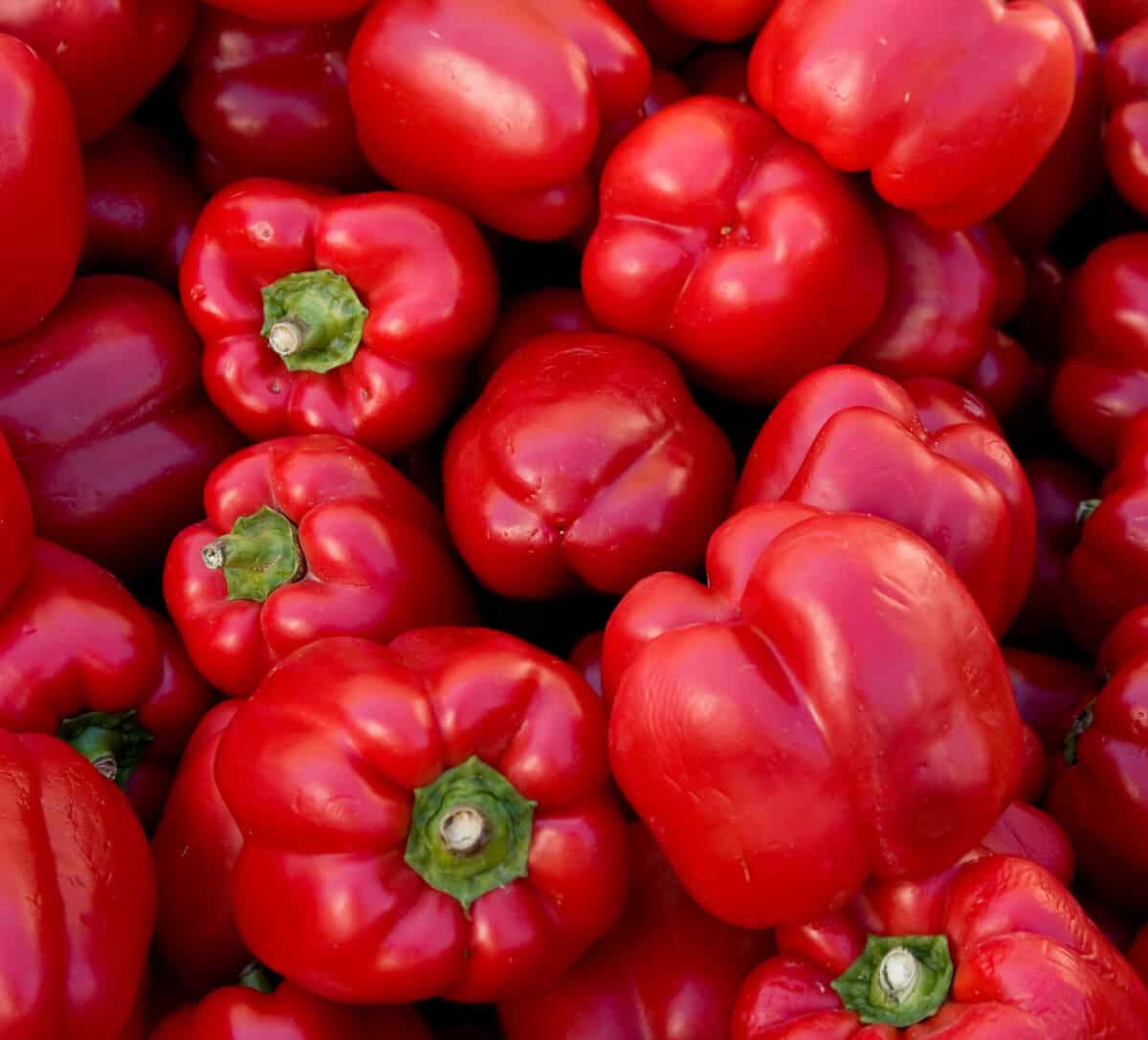
Scoville Heat Units: 500-1,000
Origins: Spain
Flavor and Uses: Another mild one, these sweet and juicy peppers look just like cherries or cherry tomatoes. Many people only know them as the red thing stuffed inside an olive, but they’re delicious on their own, either raw or pickled — you can find them included in olive bars at better grocery stores. They are a must if you’re making tapas.
Dehydrated and ground pimento is a commonly used ingredient in versions of paprika; try drying your own to grind up for custom rubs, sauces, and dips.
Poblano Peppers & Ancho Chilies
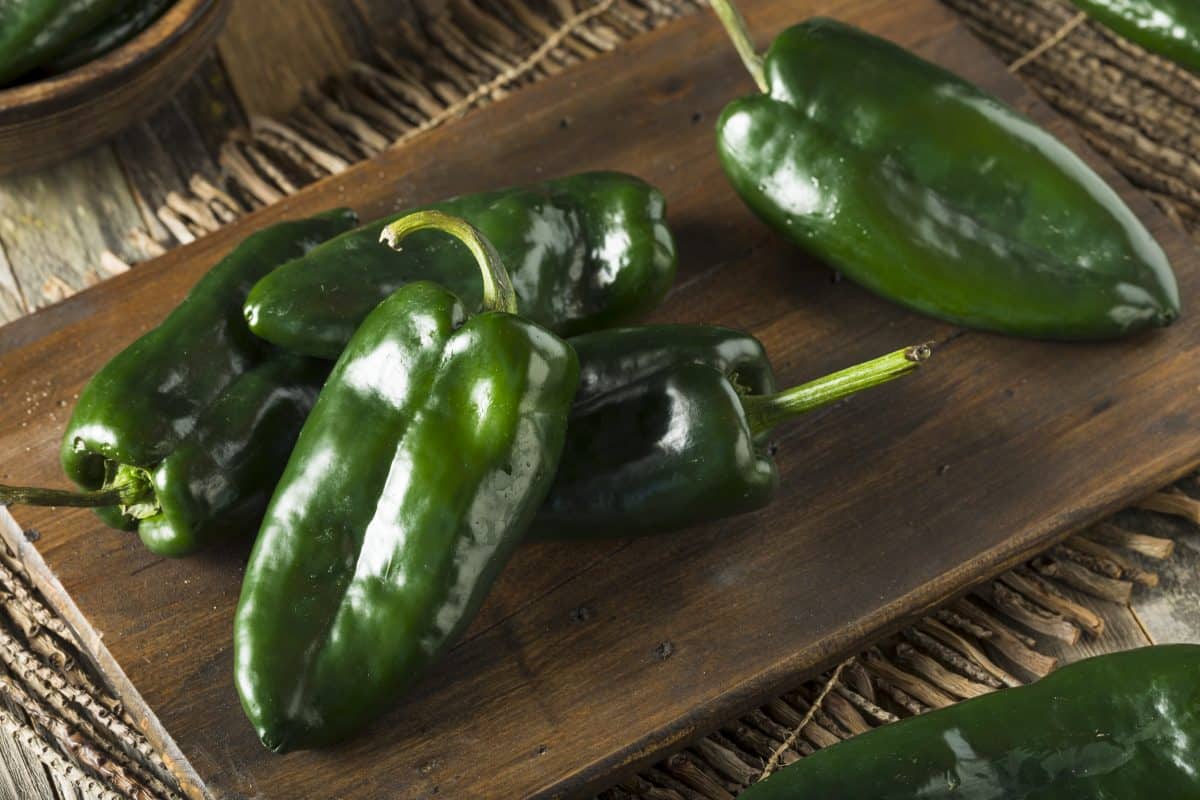
Scoville Heat Units: 1,000-2,000
Origins: Mexico
Flavor and Uses: Poblanos are mild but with discernible heat. That makes them a good choice for a crowd when you don’t know the overall spice tolerance, but don’t want to wimp out totally. These large peppers have thick skin, so they aren’t ideal for eating raw. They are, however, excellent for roasting; the heat brings out fruity notes from this earthy pepper and softens the skin.
Because of their size, poblanos are wonderful for stuffing before roasting.
Ancho chilies are poblano peppers picked ripe and then dried, not a separate cultivar. They look kind of like figs that got run over, but they’re actually delicious. Anchos impart a smoky flavor, with a touch of sweet heat, to many famous sauces, including enchilada, adobo, and mole. They’re also excellent when ground up into a pot of homemade chili.
Padron Peppers
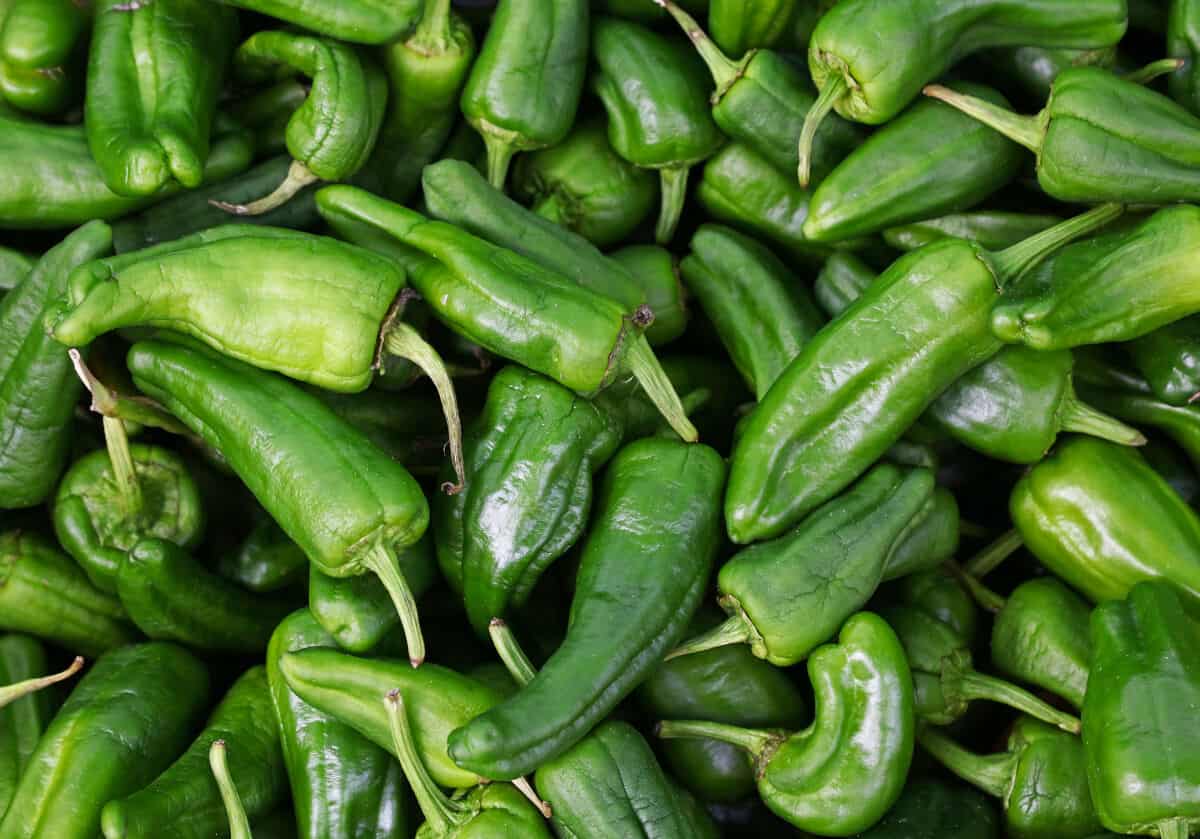
Scoville Heat Units: 500-2,500
Origins: Spain
Flavor and Uses: Like a surprise? Try eating a bunch of padrons. Most of them are so mild, you’d say there was no heat at all. But, maybe 10% of Padron peppers are as hot as milder jalapeño s — not enough to inflict pain and glorious suffering, but definitely an unexpected sensation!
The best way to enjoy these peppers is to fry them in oil until they blister and shrivel; this is a popular tapas offering. Cooked this way, patrons are strongly flavored, with a pleasant sweetness and nutty notes.
Jalapeño & Chipotle
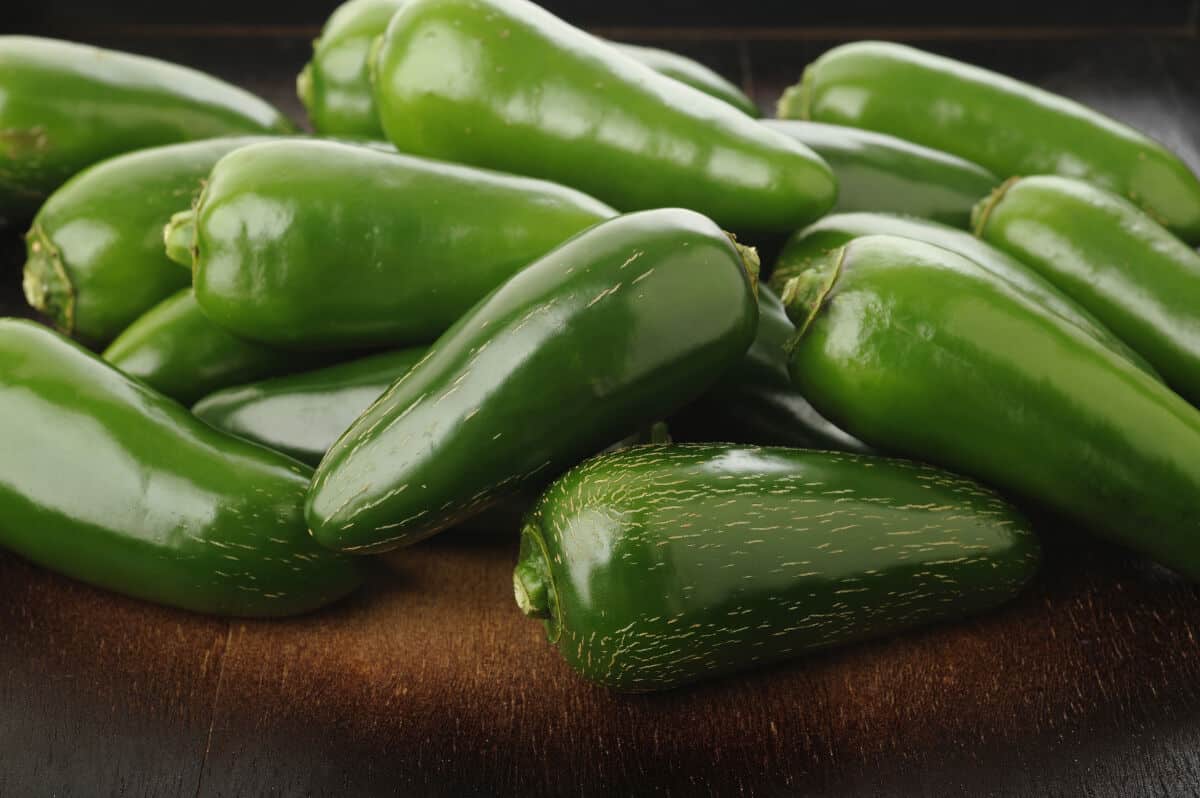
Scoville Heat Units: 2,500-8,000
Origins: Mexico
Flavor and Uses: Anecdotally, jalapeño is the most popular pepper in the world, and there are many varieties. Even those who can’t handle much spice will find the typical jalapeño manageable, especially when pickled and/or served without seeds.
Harvested while still green and eaten raw, jalapeño peppers are slightly bitter but with a bright, fresh flavor. They become sweeter and less hot as they ripen and turn red. They are incredibly flavorful when roasted, and they are often stuffed and wrapped in bacon for a blend of sweet, savory, salty, and spicy all in one to become atomic buffalo turds.
Use jalapeño peppers in salads and grilled cheese; on pizzas, hot dogs, and burgers; and of course in nachos — you can’t beat the bite blended in with sweet and smoky pulled pork.
Chipotle is a catch-all term used in English for just about any dried and smoked peppers. Most, however, are smoked red jalapeño peppers. There are a few varieties with a range of different properties, including varying heat levels. Ground up, they add earthy, smoky taste to dips, sauces, rubs, and chili, and are seen in beef brisket rub, and chicken dry rub.
Serrano
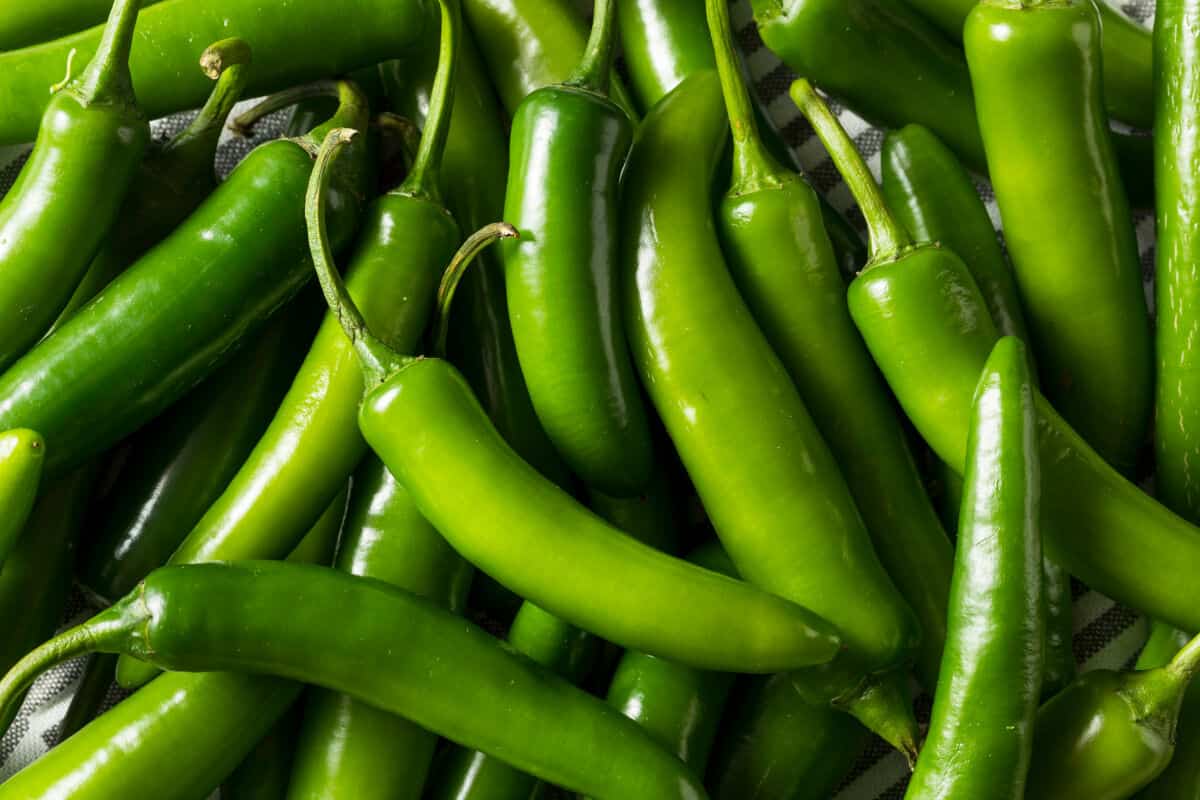
Scoville Heat Units: 10,000-23,000
Origins: Mexico
Flavor and Uses: When you’ve “graduated” from jalapeño peppers and crave more heat, Serrano peppers are the next logical step. They have a fresh, crisp flavor that’s appealing, but with a noticeably more powerful kick.
Serrano peppers are commonly chopped up for salsa, pico de gallo, and other condiments and garnishes. Roasting them brings out the sweetness and softens the skin.
Cayenne Peppers
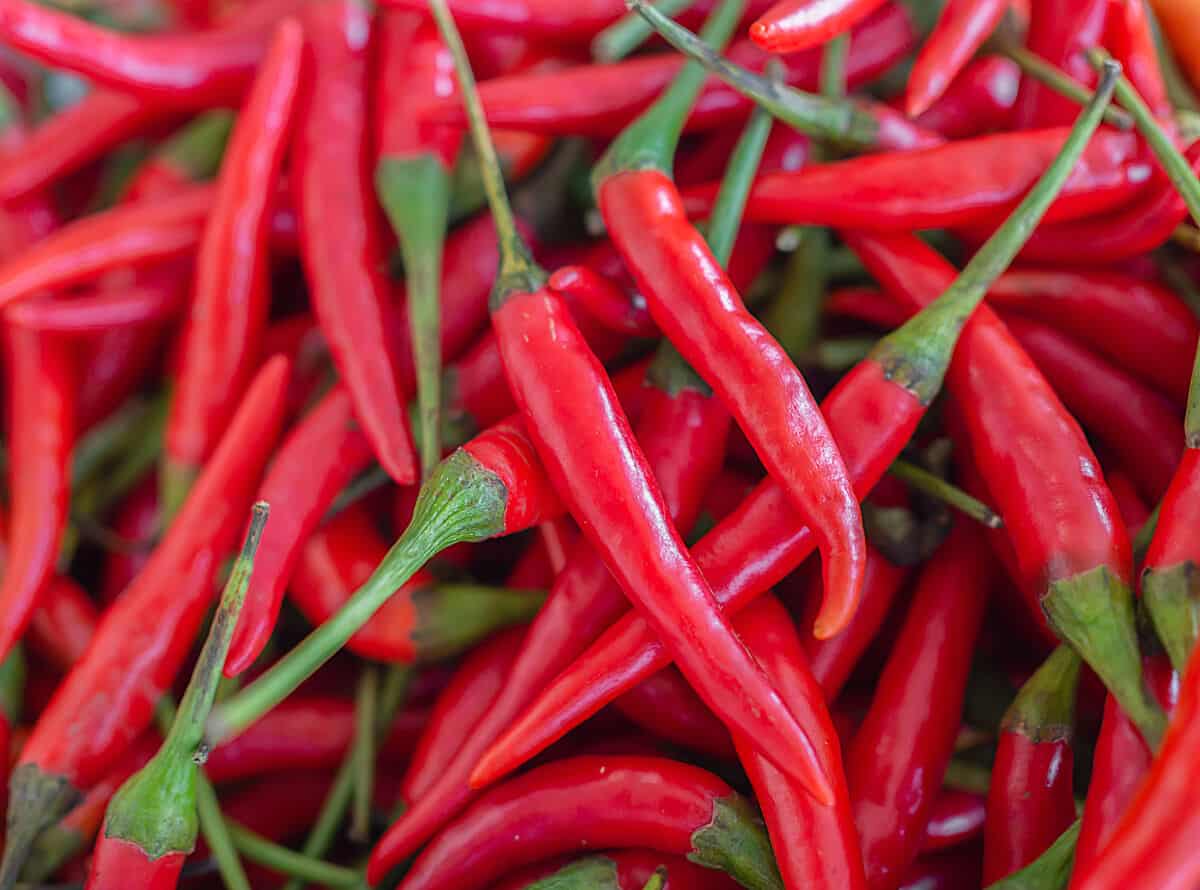
Scoville Heat Units: 30,000-50,000
Origins: French Guiana (South America)
Flavor and Uses: These moderately spicy peppers are thin and tapered and may be green or red or somewhere in between, depending on when they were harvested. It’s unusual to find fresh cayenne; they are most commonly dried and ready for grinding when sold whole.
Most of us purchase pre-ground cayenne pepper in bottles, and it’s also found in flaked format in shakers, especially in good pizza places.
Cayenne adds pleasant heat to dry rubs and homemade barbecue sauces, and it’s a great alternative to salt and pepper on the table.
Tabasco Pepper
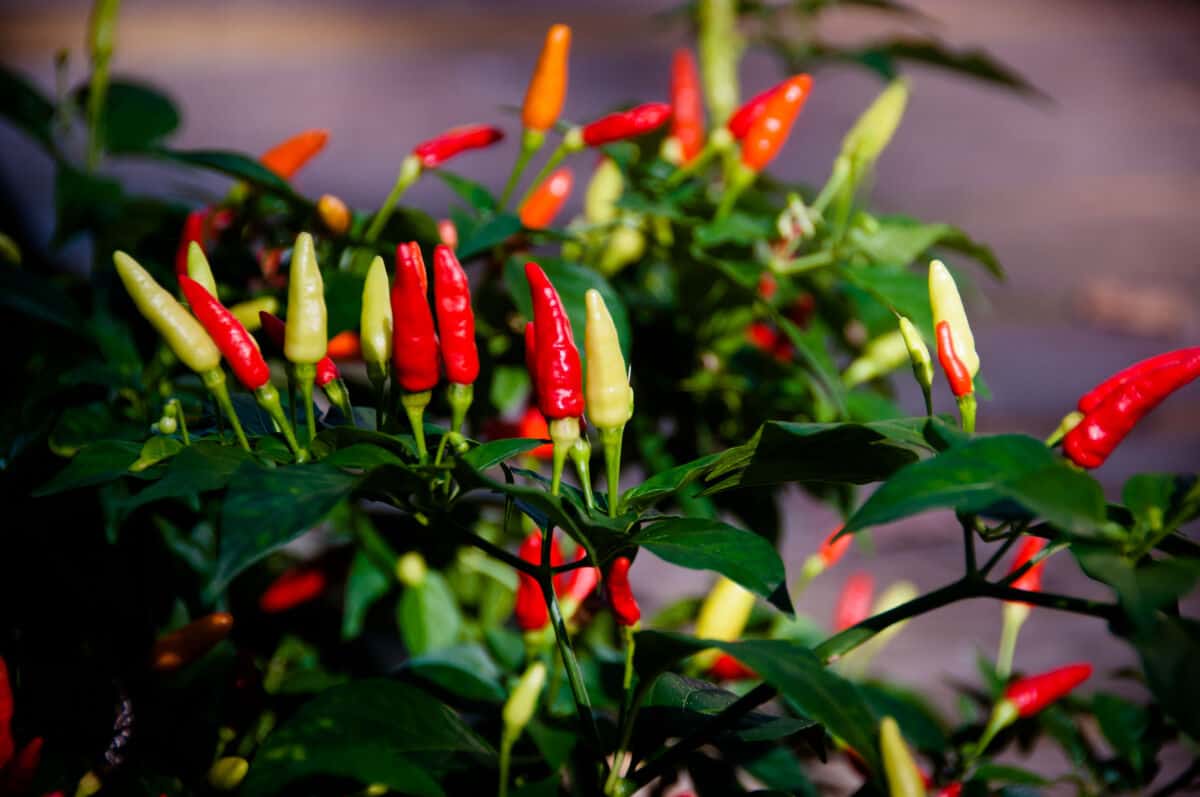
Scoville Heat Units: 30,000-50,000
Origins: Mexico
Flavor and Uses: Thanks to the famous sauce, Tabasco peppers may be among the world’s best-known chilies. However, I suspect most people who eat the sauce don’t realize it’s also the name of a Mexican state and the pepper itself. (Interestingly, all peppers for Tabasco sauce were once grown in Louisiana. Today, they are grown in South and Central America, but with seed harvested from the original Avery Island, Louisiana plantation.)
They are small, thin peppers, colored red, yellow, or orange. Eaten raw, they are much spicier than the commercial sauce, with a fruity taste. They’re best for making homemade sauces, or dehydrating to grind into chili powder.
Unripened green Tabasco peppers are good for creating a spicy salsa verde.
Bird’s Eye Chilies
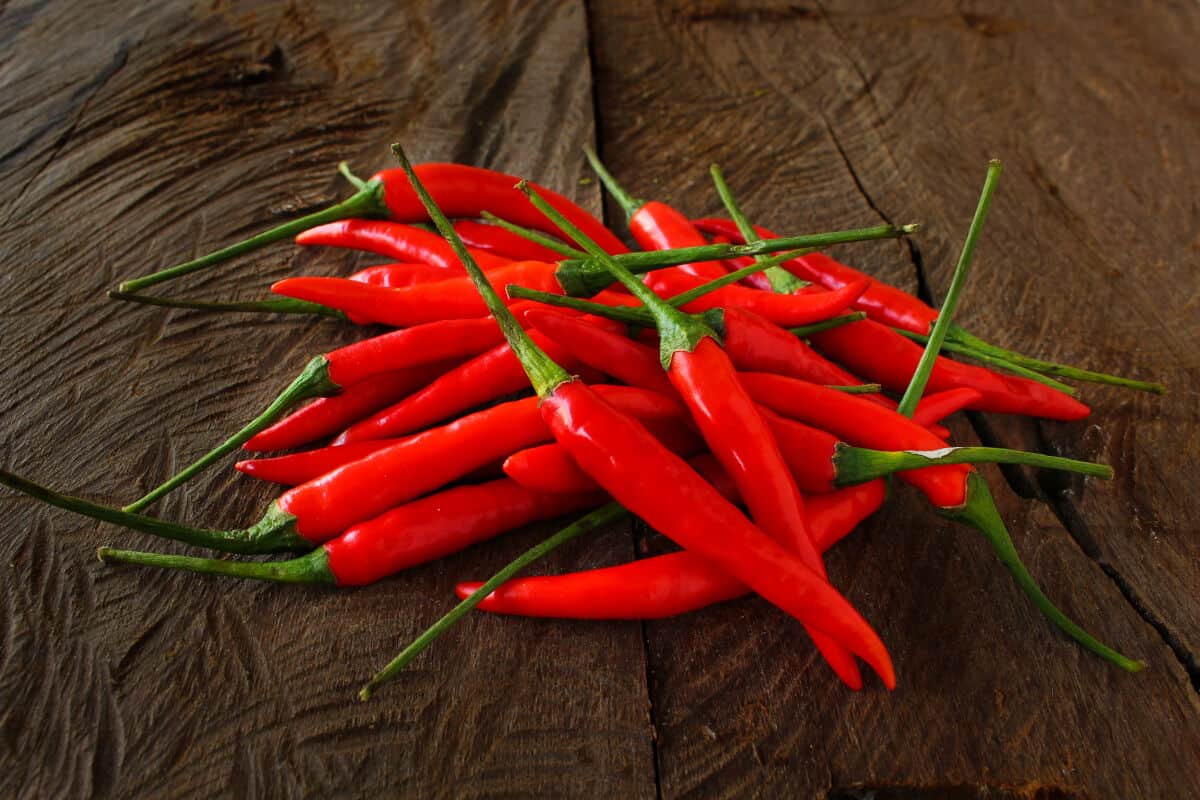
Scoville Heat Units: 50,000-100,000
Origins: Southeast Asia
Flavor and Uses: Small and hot, these berry-like peppers are very popular in Thailand, Cambodia, Vietnam and other Southeast Asian countries. (It even inspired a famous song in Thailand — “Prik Kee Noo,” which is the Thai name for this pepper. Depending on whom you ask, it either means Bird S*** Chili or Mouse S*** Chili. Yummy.) If you’re cooking Asian cuisine, these should be your go-to chili pepper.
Other peppers share this alternative name, including Pequin and Chiltepin peppers. These are native to South and Central America and are not at all the same.
Piri Piri or Peri Peri
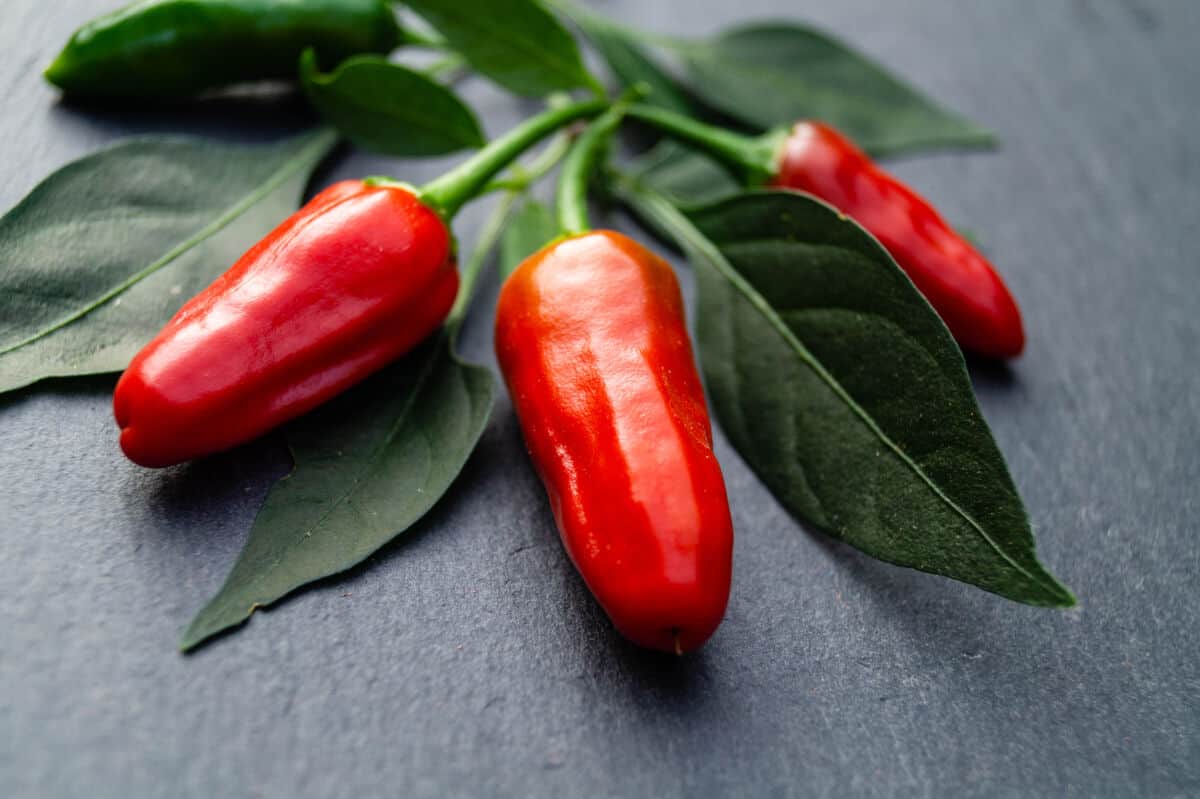
Scoville Heat Units: 50,000-175,000
Origins: Southern Africa
Flavor and Uses: The name comes from Swahili, but it was the Portuguese colonists in Africa that made this pepper famous. The peppers are rarely used for anything except Piri Piri (or Peri Peri) sauces and other condiments, and most of us know it best as the taste of Nando’s, a world-wide chicken restaurant chain.
It can be pretty spicy, like a low-level Habanero, and it really is excellent on chicken and pork. Those who have eaten Piri Piri peppers raw say they’re lightly flavored, and even a bit herbal in taste.
Scotch Bonnet
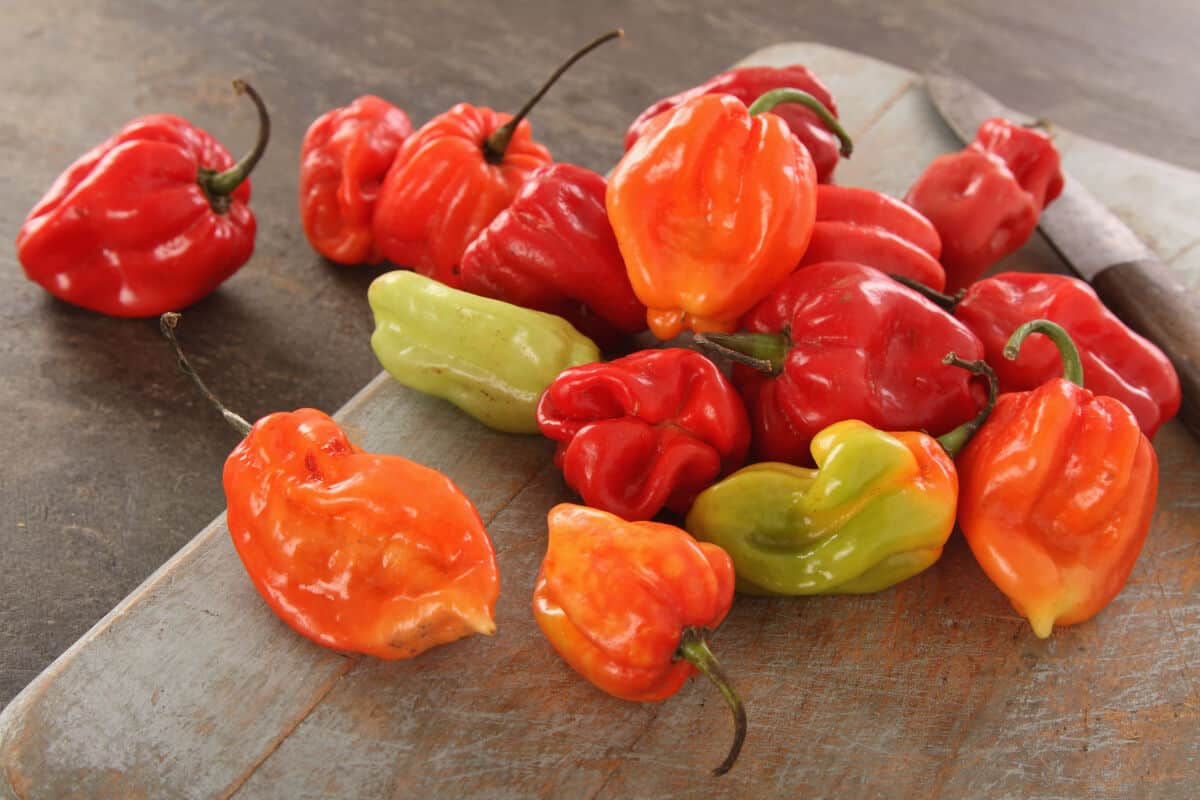
Scoville Heat Units: 100,000-350,000
Origins: Caribbean
Flavor and Uses: This cultivar of the Habanero is highly flavorful — and it’s also where a lot of people tap out when it comes to pushing their spice tolerance. Scotch Bonnets are small and usually yellow and get their name from their appearance, looking vaguely like a Scottish Tam O’Shanter hat.
If you can get past the heat, they’re very fruity and even sweet, making them ideal for all kinds of sauces. Use them for an authentic taste of the Caribbean islands in your jerk chicken and pork, or nibble on them fresh for a snack with a kick.
Habanero
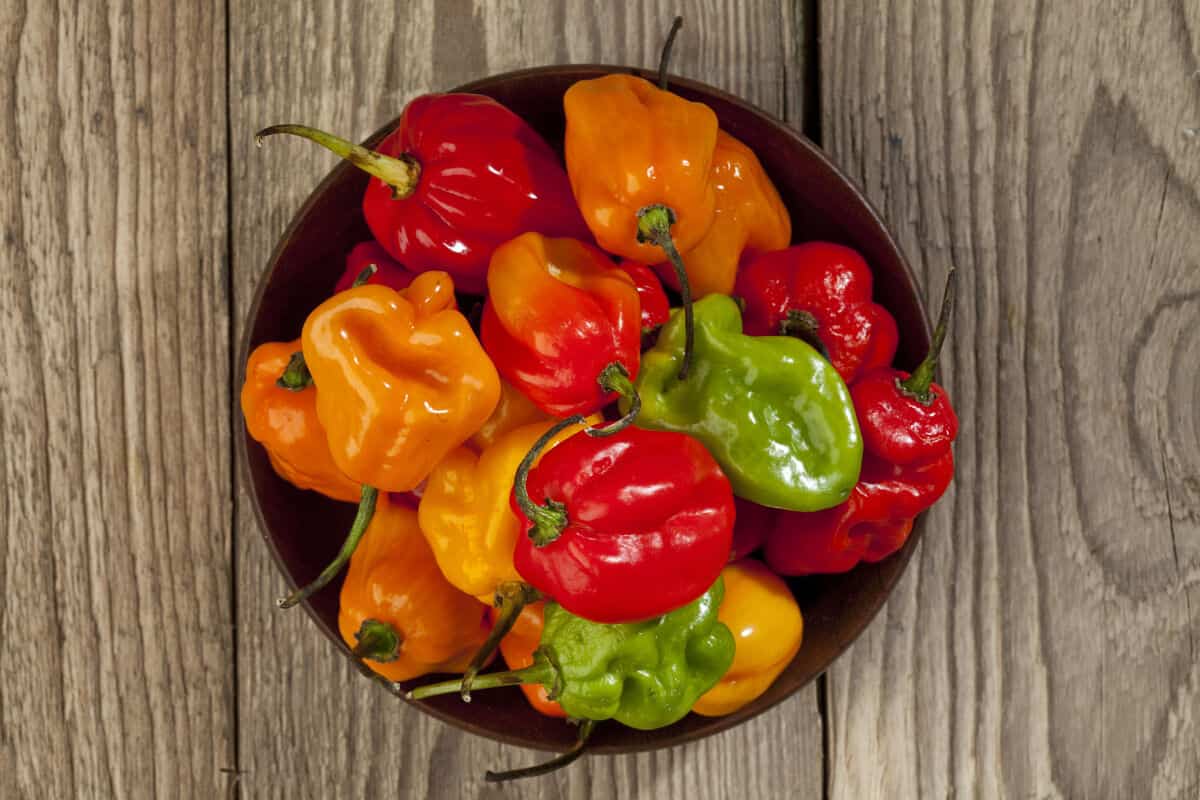
Scoville Heat Units: 100,000-350,000
Origins: Caribbean
Flavor and Uses: These hot little guys are a lot like Scotch Bonnets (no surprise, since Scotch Bonnets are a cultivar of Habanero peppers) but more citrusy in taste.
Habaneros are very popular peppers, especially in Western Caribbean and Mexican cuisine. You can use them to make your own hot sauces or spiced-up salsa. Habanero peppers have been developed into a variety of cultivars with a wide range of flavor profiles.
Chocolate Habanero
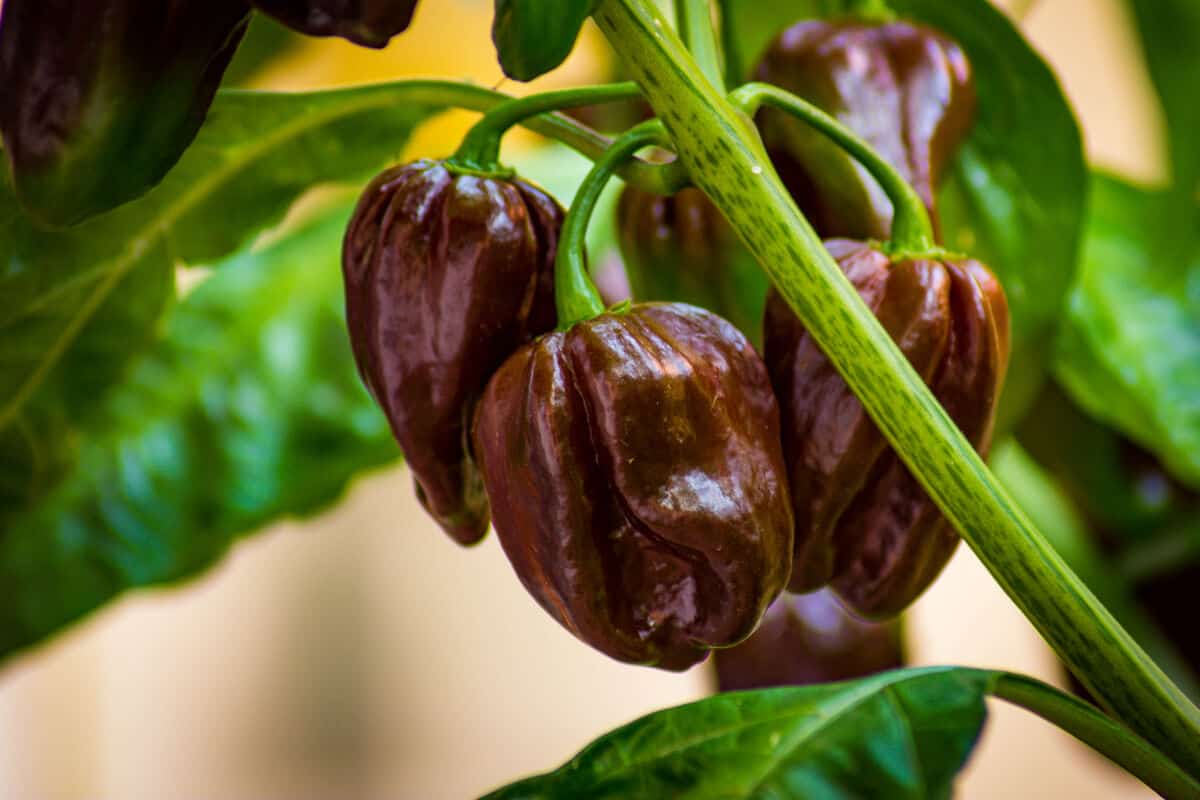
Scoville Heat Units: 300,000-425,000
Origins: Caribbean
Flavor and Uses: There’s no chocolate flavor here, just the color of this unique cultivar of the habanero. They are larger and hotter than the original, with a rich and smoky taste. Mix chocolate habanero with fruit in chutneys and salsas for a sweet-with-heat condiment. They are also fabulous in jerk sauce if you’re doing Jamaican barbecue.
Trinidad Scorpion
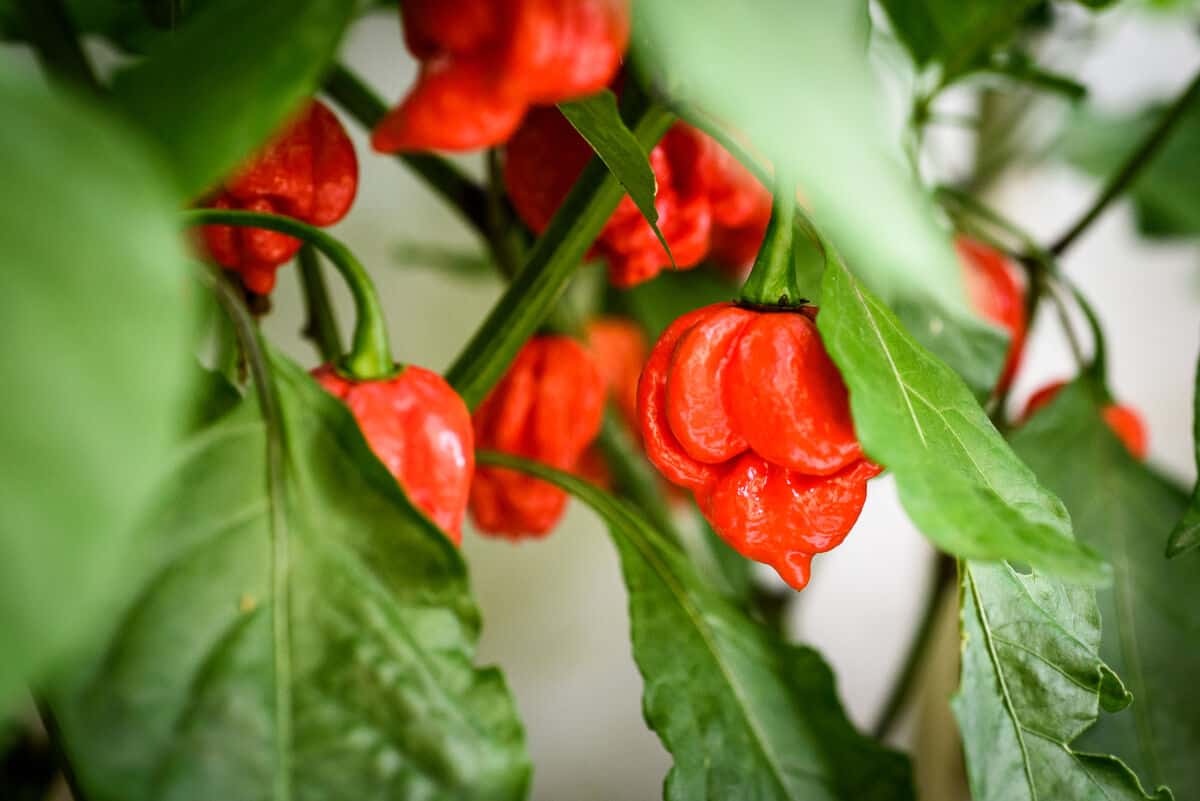
Scoville Heat Units: 300,000+
Origins: Trinidad & Tobago
Flavor and Uses: They get their name from their pointy “tail,” but the Trinidad Scorpion has a sting like the famous arachnid. There are several varieties, and a Scorpion of about 300,000 SHU would be on the low-end for spice; some variants, including the Butch T and Moruga, exceed 1,000,000 Scoville Heat Units.
They are mildly fruity, but their primary purpose is to add intense heat to marinades and sauces. Once you get to this level, it’s time to start wearing gloves during prep to protect your skin.
Ghost Pepper/Bhut Jolokia
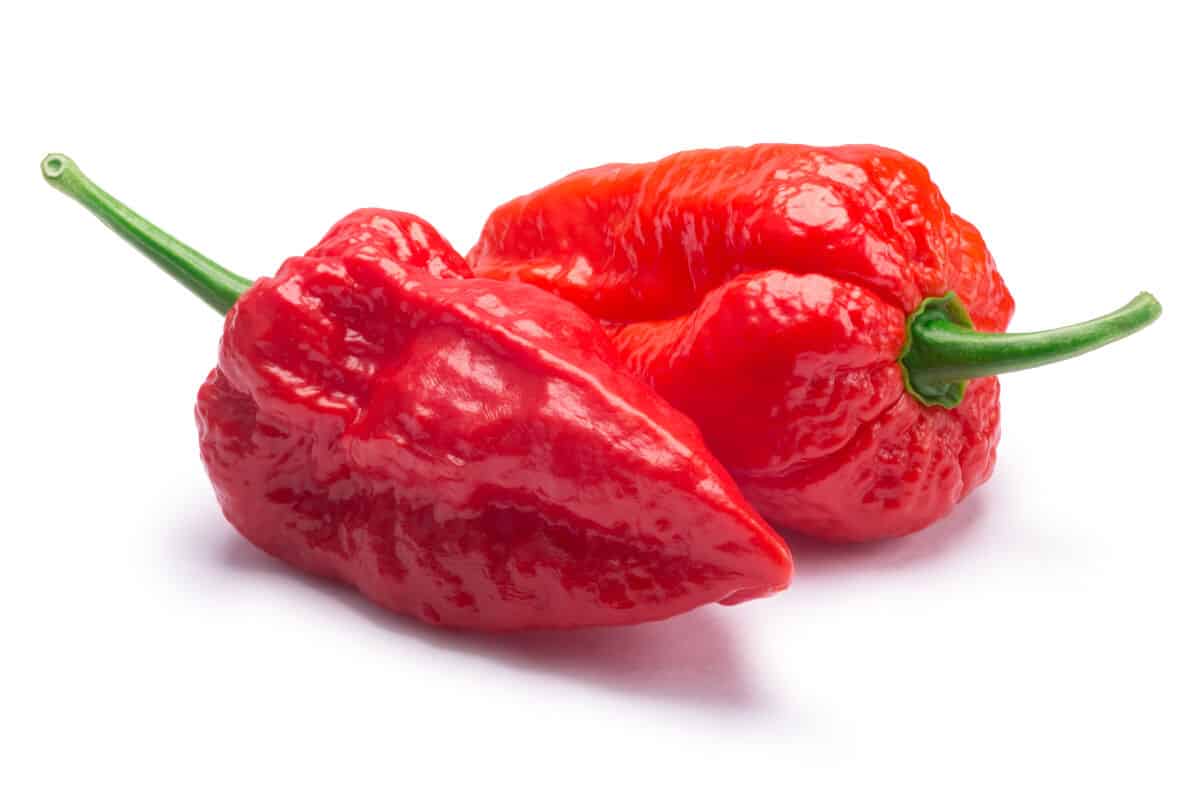
Scoville Heat Units: 1,000,000+
Origins: Northern India
Flavor and Uses: Once upon a time, these were known as the hottest chili peppers in the world. Ghost peppers have a wonderfully sweet flavor at first bite. About 30 seconds after that first bite, the intense heat kicks in, and you begin to second guess the wisdom of your actions.
Expect the heat to build for up to 15 minutes before slowly ebbing away over the next half an hour. Use for heat and flavor in sauces (or dried and ground into rubs) or added directly to chili and stews or Indian dishes.
Carolina Reaper
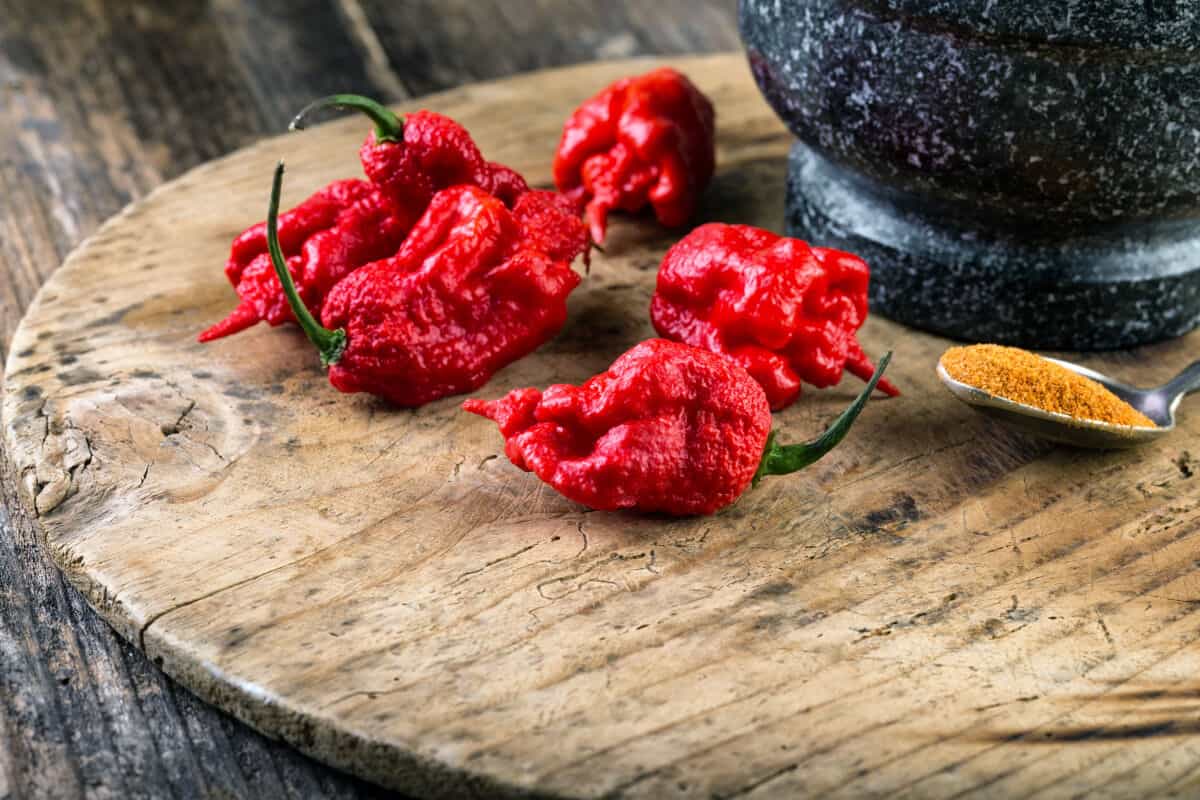
Scoville Heat Units: 1,400,000-2,200,000
Origins: South Carolina, US
Flavor and Uses: Currently recognized as the World’s Hottest Pepper by Guinness, this cultivar was developed by the aptly named PuckerButt Pepper Company. The official record is an average of 1,641,183 Scoville Heat Units. They are mercifully small with a sweet and fruit-forward taste. It’s best used in small doses blended into a sauce for flavor and heat.
You can also dry Carolina Reapers and grind them into a powder for adding a kick to rubs or stirring into sauces and marinades. Always use gloves when handling peppers this hot.
The Hottest Chilies in the World

There has been what you might call an “arms race” of chili peppers running for many years. Pepper fanatics hybridize the hottest peppers around to try and up the ante and entice brave souls to conquer the world’s hottest peppers.
In fact, they are so insanely hot, the only reason to consume them is for bragging rights — it’s entirely possible to make blazingly hot and delicious hot sauces without risking your actual enjoyment of your food or even your safety.
But, for those who want to challenge themselves, here are 5 of the Hottest Chili Peppers in the world and their peak Scoville ratings (SHUs vary between individual peppers, and records are based on averages). I’ve compared each one to jalapeño peppers, the accepted baseline for hot peppers, using an average SHU score of 5,000.
The top five, in ascending order, as of the time of writing are:
- #5 Dorset Naga
- SHUs — 1,598,227
- Jalapeño rating — 320 times hotter
- #4 Pot Douglah
- SHUs — 1,853,986
- Jalapeño rating — 371 times hotter
- #3 Trinidad Moruga Scorpion
- SHUs — 2,000,000
- Jalapeño rating — 400 times hotter
- #2 Komodo Dragon
- SHUs — 2,200,000
- Jalapeño rating — 440 times hotter
- #1 Carolina Reaper
- SHUs — 2,200,000
- Jalapeño rating — 440 times hotter
There are rumors of a pepper called the Dragon’s Breath coming out of Wales that may dethrone the Carolina Reaper, potentially pushing 2.5 million SHUs.
Word has it, it was developed for medicinal purposes as an alternative to anesthetic and may even be dangerous to eat. Time will tell if it’s true or just another internet ghost (pepper) story.
Essential Chili Peppers Every Cook Should Stock
With so many chilies in the world, you could spend a lifetime getting to know each one. However, there are a select few that every cook and every barbecue lover should have on hand. Here’s a list of some of our go-tos and why.
Bell Peppers
Are they hot? Well, no. But they are delicious, and they look fantastic. Sliced or chopped bell peppers add instant appeal to salads and veggie platters, and they are amazing for roasting and stuffing or fajitas and stir-fry.
Jalapeño
Even the most-spiced challenged eaters can usually handle the ubiquitous jalapeño . Adding even a tiny amount to sauces, a pot of chili, or nachos provides a major flavor boost and manageable heat. They’re awesome for appetizers, too, like bacon-wrapped jalapeño poppers served hot off the grill.
Chipotle
Yes, as explained above, these are usually dried jalapeño s. Because they’re dried, they have a long shelf-life, so they’re great to have around for when the mood strikes. Again, most people can cope with a bit of chipotle heat in a BBQ spice rub.
Serrano Chilies
Warm but not scorching, these easy-to-work-with peppers will ramp up your homemade salsa for an authentic Mexican feast.
Cayenne Peppers
There isn’t much you can’t do with cayenne. Keep these red devils handy to put some kick into your soups, spice rubs and marinades, or to punch up your take-out pizza. Would you believe it’s even delicious baked into chocolate cookies and cakes?
Scotch Bonnets
If you want to ramp up the Scovilles without getting into the “Challenge Accepted!” realm, these are the peppers you want. Scotch Bonnets are delicious despite packing a wallop of heat. They are magnificent for homemade hot sauces, chutneys, and salsas you can use on chicken (hello, spicy wing night!), fish, and pork.
Chili Pepper Substitutions
Sometimes, we’re missing an ingredient from a recipe, and we have to make do with what we’ve got. What are some chili pepper swaps you can make in a pinch that will deliver a similar flavor profile or heat?
Certainly, peppers of similar SHU levels might be interchangeable. For example, Banana Peppers are sweet, with next to no heat, so you can swap for plain old Bell Peppers. Likewise, Habaneros can sub in for Scotch Bonnets (they’re almost the same thing) and vice versa, though the flavor difference may be noticeable.
Chipotle is hard to substitute, thanks to its enticing mix of low heat and smokiness. Your best bet here is to use jalapeño s and some liquid smoke if you have it.
Be careful when it comes to trying to swap peppers that are far apart on the Scoville scale. Some sites will tell you to just double-up on the milder peppers or use half as much of the hotter ones. That will work to an extent, but there’s more to a pepper than just heat; you might completely change the flavor.
For example, try and imagine how much jalapeño you’d need to fill in for the heat of habanero — you could end up with a mouth full of jalapeño s and a vastly different taste. Reversing the process, unless you very carefully distribute the chilies, you may discover surprise “hot spots” in whatever you’re making.
Ways to Cool Your Mouth That Work (Read this BEFORE You Take a Bite!)
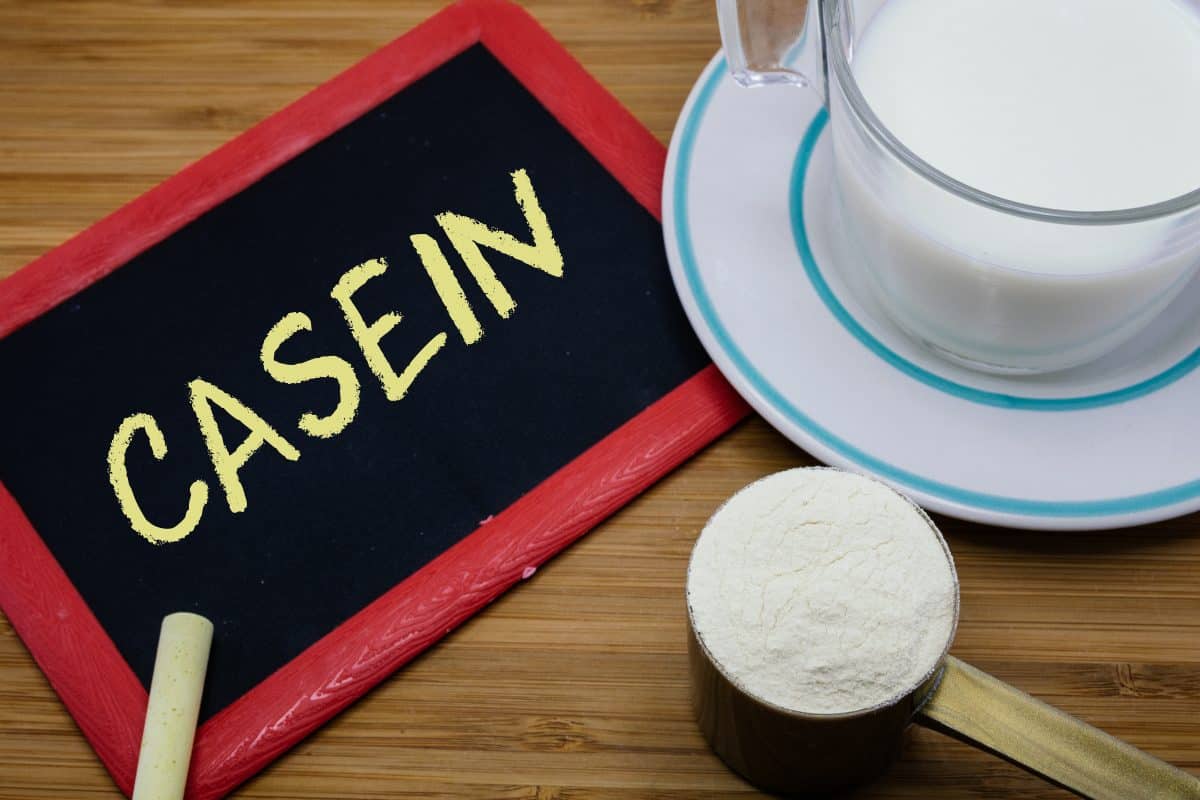
It happens to the best of us: you bite into a chili pepper and suddenly realize you’ve bitten off more than you bargained for. What can you do to put out the fire that actually works? Try one of these proven methods.
Extra Virgin Olive Oil
Odds are you have a bottle of this around for cooking. I bet you didn’t know it can put out that fire in your mouth, too. Take a pull, swish it around in your mouth, and spit it out. Capsaicin, which, if you read the whole article, you know is the compound in peppers that triggers the pain response, dissolves in oil.
Milk
There’s a protein in milk called casein, and it’s pretty much kryptonite for capsaicin. Any dairy will do (two scoops of chocolate ice cream, coming up!), but the more fat, the better.
If you don’t consume dairy for whatever reason, don’t bother reaching for the nut milk or other dairy substitutes — they don’t contain casein.
Sugar
Remember our history of the Scoville scale? The original version was based on drinking sugar water until the heat subsided. The complex carbon molecules in sugar like to bond with capsaicin, and, once bonded, you can swallow them down or spit them out. Go with a sugar cube, if you have one handy, or you can try a spoonful of honey.
Don’t bother with water or alcohol
It’s a natural reaction to reach for a cold drink to soothe your burning mouth. Unfortunately, water will just spread the flames, kind of like when you throw it on a grease fire (which you should never do).
As for booze, while it’s slightly more effective than plain water, you’ll end up drunk before it takes effect on the heat. Up to you if that’s better or worse than, say, eating yogurt and getting on with your day.
Final Thoughts
Peppers are a versatile ingredient that anyone who barbecues, or cooks in any way, should get to know. Whether you crave the rush of that melt-your-face-off experience or appreciate some extra tingle in your recipes, there’s a pepper for everyone.
Now that you know your peppers, explore the site for recipes and barbecue tips to apply your new learning. Let us know what peppers you love, too — drop a line or join the conversation on social.
Thanks for picking our pack of pepper particulars!


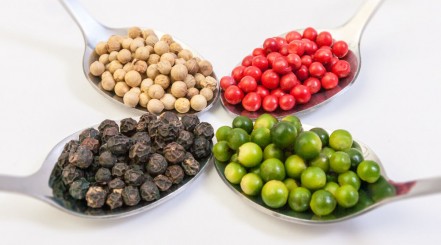

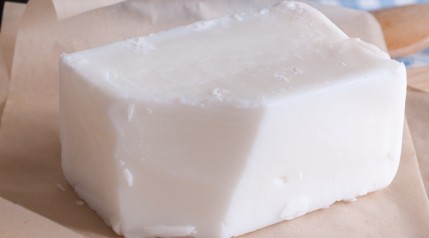
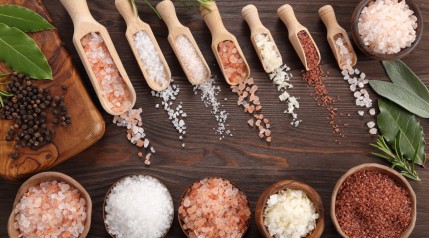
Hi, I have a pepper plant from family in Charleston, SC. The seeds have been passed on for years. If I took a picture, could you identify it,
Thanks
Jane
Hi Jane,
Unfortunately not. I only know the most common 20 or so, as I’ve only ever grown 10 or so varieties, and cooked with 20 or so. And there are so many more than that. If you take pictures, and then do a ‘reverse google image search’ you might be able to find out? Do this with both the whole plant, the leaves, and the fruits themselves.
Alternatively you could google for ‘chili pepper forum’, open a few results, join and ask there where you will find professional and keen amateur growers who will know far more than I!
Best of luck.
Olive oil swish, whole milk, ice cream, whole yogurt, sugar, honey “medicine”
Best info ever — one habanero too late—but lifesaving!
Makes me think rubbing on throbbing painful hands might work too.
Very useful and interesting article.I didnt know about the olive oil trick.Thanks.